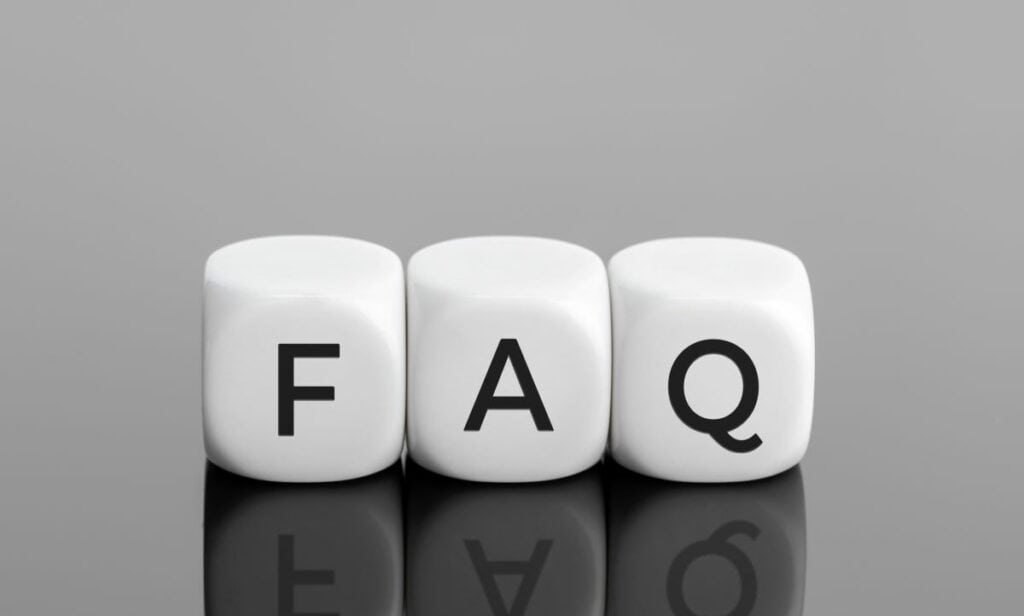Hyperstimulation anxiety emerges when an individual’s sensory input exceeds their capacity to manage it effectively, often leading to heightened states of anxiety.
Managing hyperstimulation anxiety requires a multifaceted approach that addresses both physiological and psychological aspects of arousal regulation.
We will delve into the generals of hyperstimulation anxiety and strategies and techniques to effectively manage it, empowering individuals to regain control over their arousal levels and improve their quality of life.
Understanding Hyperstimulation Anxiety

Hyperstimulation anxiety is a state that arises from the excessive activation of the nervous system, which can lead to feelings of intense anxiety.
This condition can manifest through physical and emotional symptoms such as restlessness, irritability, and overwhelming sense of worry.
The underlying causes of hyperstimulation anxiety are diverse, ranging from psychological stressors to various health conditions that disrupt the body’s natural balance.
Defining Hyperstimulation and Anxiety
| Hyperstimulation | Anxiety |
|---|---|
| Hyperstimulation refers to an excessive level of sensory stimuli, which the body may struggle to process. This overexposure can arise from various sources, like crowded environments, loud noises, or a fast-paced lifestyle. | Anxiety embodies the body’s natural response to stress, manifesting as apprehension or fear about what is to come. |
The Brain’s Role
The brain is central to processing stimuli and orchestrating the body’s response. When faced with an overload of sensory information, the brain’s amygdala may trigger an anxiety response.
During hyperstimulation, neurotransmitters like serotonin and adrenaline play key roles, with the former helping to regulate mood and the latter preparing the body for a “fight or flight” response.
In-depth reviews of the neural bases of anxiety affirm the relationship between brain hyperstimulation and anxiety and related disorders.
Hyperstimulation Anxiety in Children and Adults
Both children and adults can experience hyperstimulation anxiety, but the way it presents itself may differ.
| Children | Adults |
|---|---|
| It can lead to behaviors such as tantrums or withdrawal, as they may lack the verbal skills to articulate their discomfort. | Hyperstimulation anxiety can result in avoidance behaviors or overreaction to sensory input. |
For both demographics, it is crucial to understand the signs and facilitate environments that help mitigate sensory overload.
Causes and Triggers

Understanding the causes and triggers of hyperstimulation anxiety is crucial for identifying and addressing this condition.
Factors can range from environmental stimuli to personal health conditions that affect the nervous system, provoking a hyperaroused state.
External Stimuli as Triggers
External stimuli can significantly impact individuals with a predisposition to hyperstimulation.
Causes such as excessive noise, bright lights, or rapid changes in the surrounding environment can serve as potent triggers.
For people with conditions like Autism Spectrum Disorder (ASD), these stimuli can lead to sensory overload, which exacerbates feelings of anxiety.
Stress and Anxiety Disorders
Stress often plays a fundamental role in triggering hyperstimulation anxiety. Situations that induce fear or apprehension, whether real or perceived, can lead to a chronic state of heightened anxiety.
Anxiety disorders themselves are a primary cause, where the individual’s response to stressors is disproportionately intense and persistent, leading to a cycle of hyperarousal and anxiety.
Neurological Conditions and Sensory Issues
Neurological conditions, such as Attention Deficit Hyperactivity Disorder (ADHD) and sensory processing issues, can leave one prone to hyperstimulation.
Individuals with ADHD may experience hyperstimulation as they struggle to regulate responses to sensory input.
Sensory issues, often seen in both ADHD and autism, make it challenging to filter out irrelevant stimuli, leading to an overwhelm that can trigger anxiety.
Physical and Psychological Symptoms

Hyperstimulation anxiety can manifest through a variety of symptoms that affect both the body and the mind.
These symptoms are often interrelated, stemming from the body’s stress response and emotional disturbances.
Common Symptoms of Hyperstimulation
| Physical Symptoms | Psychological Symptoms |
|---|---|
| Rapid heart rate | Excessive worry |
| Shortness of breath | Irritability |
| Dizziness | Concentration difficulties |
| Muscle tension | Sleep disturbances |
These symptoms can be pervasive and persistent, often interfering with daily activities and overall well-being.
Understanding the Stress Response
The stress response is a physiological reaction that occurs in response to perceived threats. It involves the release of hormones like cortisol and adrenaline, preparing the body for fight-or-flight action.
While this response is crucial for survival, chronic activation due to ongoing anxiety can lead to a state of continuous hyperstimulation.
Therapists Specializing in Anxiety
The Relationship Between Emotions and Physical Symptoms
Emotions are intricately connected to physical states. Anxiety can trigger an array of physical symptoms that mimic those of serious health conditions, complicating the experience of stress and anxiety.
The limbic system, responsible for emotional regulation, can become overactive in individuals with chronic anxiety, further exacerbating these symptoms.
Management Techniques and Treatments

Managing hyperstimulation anxiety effectively involves a combination of therapeutic strategies, lifestyle modifications, and medical interventions.
These approaches aim to reduce symptoms, address stress hormones, and improve quality of life for those affected.
1. Behavioral and Cognitive Therapies
Cognitive-behavioral therapy (CBT) is a highly effective treatment for reducing the symptoms of hyperstimulation anxiety.
This therapy focuses on altering negative thought patterns and behaviors that contribute to anxiety.
Sessions involve learning to identify distressing thoughts and replacing them with more balanced ones, alongside exposure techniques to reduce fear and avoidance behaviors.
2. Lifestyle Adjustments for Symptom Relief
Incorporating lifestyle adjustments can provide symptom relief from hyperstimulation anxiety.
Regular exercise and meditation are recommended, as they can reduce stress hormones and promote a state of relaxation.
Additionally, practicing mindfulness and deep breathing techniques can help individuals stay present and grounded, preventing overwhelming anxiety.
3. Deep Breathing
Practicing deep breathing exercises can calm the nervous system and reduce stress.
This can include diaphragmatic breathing, where you breathe deeply into your belly, or square breathing, where you inhale for a count of four, hold for four, exhale for four, and hold for four.
4. Progressive Muscle Relaxation (PMR)
Progressive Muscle Relaxation (PMR) is a relaxation technique aimed at reducing muscle tension and promoting a sense of calm in the body.
It involves tensing and then relaxing different muscle groups in the body, systematically moving from head to toe or vice versa. This helps release tension and promote relaxation throughout the body.
Incorporating PMR into your daily routine can be a valuable addition to your anxiety management toolkit. Whether practiced alone or in combination with other relaxation techniques, PMR can help you cultivate a greater sense of calm and well-being in your life.
5. Grounding Techniques
Grounding techniques are strategies used to help individuals experiencing hyperstimulation anxiety or overwhelming emotions regain a sense of control and connection to the present moment.
These techniques focus on redirecting attention away from distressing thoughts or sensations and grounding oneself in the here and now. The most common grounding technique is the 5-4-3-2-1 technique, which helps individuals engage their senses by identifying and naming:
- 5 things they can see around you
- 4 things they can touch or feel
- 3 things they can hear
- 2 things they can smell
- 1 thing they can taste
6. Medication and Other Treatments
When symptoms are severe, anti-anxiety medication may be prescribed as part of the treatment plan. These medications can help by reducing overactivity in the brain and providing short-term relief.
It’s important for individuals to work closely with healthcare professionals to find the right treatments and monitor any potential side effects.
Frequently Asked Questions

What methods are effective in calming hyperstimulation due to anxiety?
Effective methods in calming hyperstimulation tied to anxiety include mindfulness and relaxation techniques such as deep breathing exercises and progressive muscle relaxation.
Practicing these can help reduce overstimulation and manage anxiety levels.
Can the feelings of tingling associated with hyperstimulation anxiety be managed, and how?
The tingling sensations associated with hyperstimulation anxiety can be managed through grounding techniques.
These involve sensory exercises that focus on the present moment, thereby shifting attention away from the tingling and reducing anxiety.
Is it possible for hyperstimulation anxiety symptoms to be resolved over time?
Yes, it is possible for the symptoms of hyperstimulation anxiety to resolve over time with consistent self-care strategies, therapy, and, in some cases, medication prescribed by a healthcare professional.
What strategies can help cope with chronic hyperstimulation stemming from anxiety?
To cope with chronic hyperstimulation resulting from anxiety, individuals can adopt a routine that includes regular physical exercise, a balanced diet, sufficient sleep, and stress management practices such as yoga or tai chi.
How can individuals dealing with hyperstimulation-related dizziness minimize their symptoms?
Minimizing hyperstimulation-related dizziness can be achieved through vestibular balance exercises and by maintaining hydration.
Some people find that reducing stimuli, like dimming lights and limiting screen time, also helps.
What techniques can help reduce the experience of muscular twitching caused by hyperstimulation anxiety?
Techniques for reducing the experience of muscular twitching due to hyperstimulation anxiety include magnesium supplementation, ensuring adequate rest, and applying heat or massage to the affected muscles to relax them.
References
Brooks, S. J., & Stein, D. J. (2015). A systematic review of the neural bases of psychotherapy for anxiety and related disorders. Dialogues in clinical neuroscience, 17(3), 261-279. Link.







